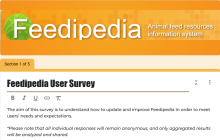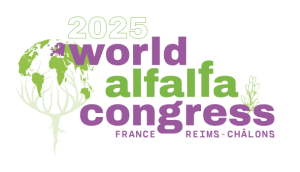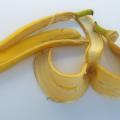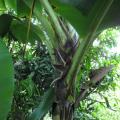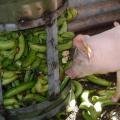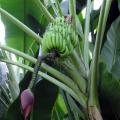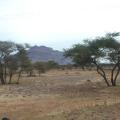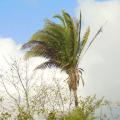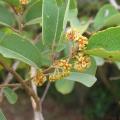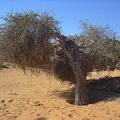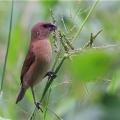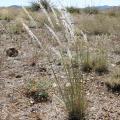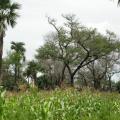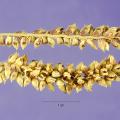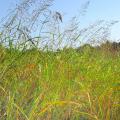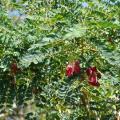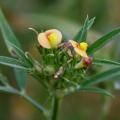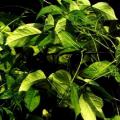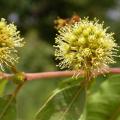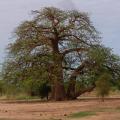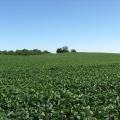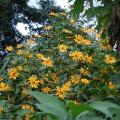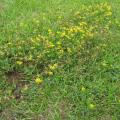Feedipedia news
After 13 years, it is time for the website to be upgraded! Before we start, we need your input.
Explore Feedipedia
|
Banana peels are the outer envelopes of banana fruits. They are the by-product of... Read more |
While banana production is a fruit crop, it generates large amounts of forage material... Read more |
Bananas are the fruits of the banana tree (Musa sp.). Bananas grow in bunches... Read more |
|
Banana (Musa sp.) is one of the major fruit crops, cultivated in all warm and... Read more |
Babul (Acacia nilotica (L.) Willd. ex Delile) is a medium sized, thorny, nearly... Read more |
Babassu (Attalea speciosa Mart. ex Spreng.) is an erect perennial evergreen palm... Read more |
|
Axlewood (Anogeissus latifolia (Roxb. ex DC.) Wall. ex Bedd.) is a small to... Read more |
Atil (Maerua crassifolia Forssk.) is a small evergreen tree, 3-10 m high, with a... Read more |
The armgrass millet (Brachiaria distachya (L.) Stapf) is a stoloniferous annual... Read more |
|
Arizona cottontop (Digitaria californica (Benth.) Henrard) is a perennial, warm-... Read more |
The apple-ring acacia (Faidherbia albida (Delile) A. Chev.) is a deciduous... Read more |
Antelope grass (Echinochloa pyramidalis (Lam.) Hitchc. & Chase.) is a tall... Read more |
|
Aleppo grass (Sorghum halepense (L.) Pers.) is a forage grass widespread... Read more |
Agati (Sesbania grandiflora (L.) Pers.) is a legume tree used for fodder in... Read more |
The African stylo (Stylosanthes fruticosa (Retz.) Alston) is a woody herbaceous... Read more |
|
The African yam bean (Sphenostylis stenocarpa (Hochst. ex A. Rich.) Harms) is a... Read more |
The African birch (Anogeissus leiocarpa (DC.) Guill. & Perr.) is a slow... Read more |
The African baobab (Adansonia digitata L.) is one of the eight species of baobab... Read more |
|
Soybean (Glycine max. L.) is a major legume crop grown for its protein- and oil-... Read more |
Mexican sunflower (Tithonia diversifolia (Hemsl.) A. Gray) is a tropical herb or... Read more |
Lotononis (Lotononis bainesii Baker) is a perennial herb from tropical and... Read more |
Pages
Recent resources
 Opinion paper: Phasing out of the aid provided to the livestock sector during expectedly recurrent emergencies
- Makkar, 2024. animal
Opinion paper: Phasing out of the aid provided to the livestock sector during expectedly recurrent emergencies
- Makkar, 2024. animal
Open access opinion paper that makes a case that the emergency aid do more harm than good to African countries. It is valid for all the fields of agriculture but has direct consequence for animal agriculture. The context here is the aid provided during emergencies that are foreseeable recurrent.
The role of livestock in food security, poverty reduction and wealth creation in West Africa
- Molina-Flores et al., 2020. Food and Agriculture Organization of the United Nations Accra, 2020
Livestock is key to 377 million people in West Africa and in some countries, up to 60% of the population is involved in livestock production. The demand for animal products is increasing with population growth, urbanization, growing middle class, and due to shifting consumer preferences towards animal products. To meet this growing demand, countries in West Africa must engage in accelerated sustainable livestock production undertaking. Livestock development is key to eradicate hunger and poverty. This book attempts to provide up-to-date, and reliable information on the potentials, opportunities, and challenges of the livestock subsector in West Africa.
Pulses and their by-products as animal feed
- Sherasia et al., 2017. In: Calles, T.; Makkar, H. P. S. (Eds), FAO, Food and Agriculture Organization of the United Nations, Rome, Italy
This document provides a state-of-the-art review of the recent research (published and unpublished) on the use of pulses and their by-products as animal feed. It aims at raising awareness on the use of pulses and their by-products. It highlights the nutritional role of pulses and pulse by-products as animal feed and is a contribution to the legacy of the 2016 International Year of Pulses. This document will further enhance the use of these feed resources in other continents, besides Asia, where many pulse by-products are simply dumped. It is also expected that the synthesis presented contributes to make the use of pulses and their by-products as animal feed more efficient. This document will be useful for extension workers, researchers, feed industry, policy-makers and donors alike.









